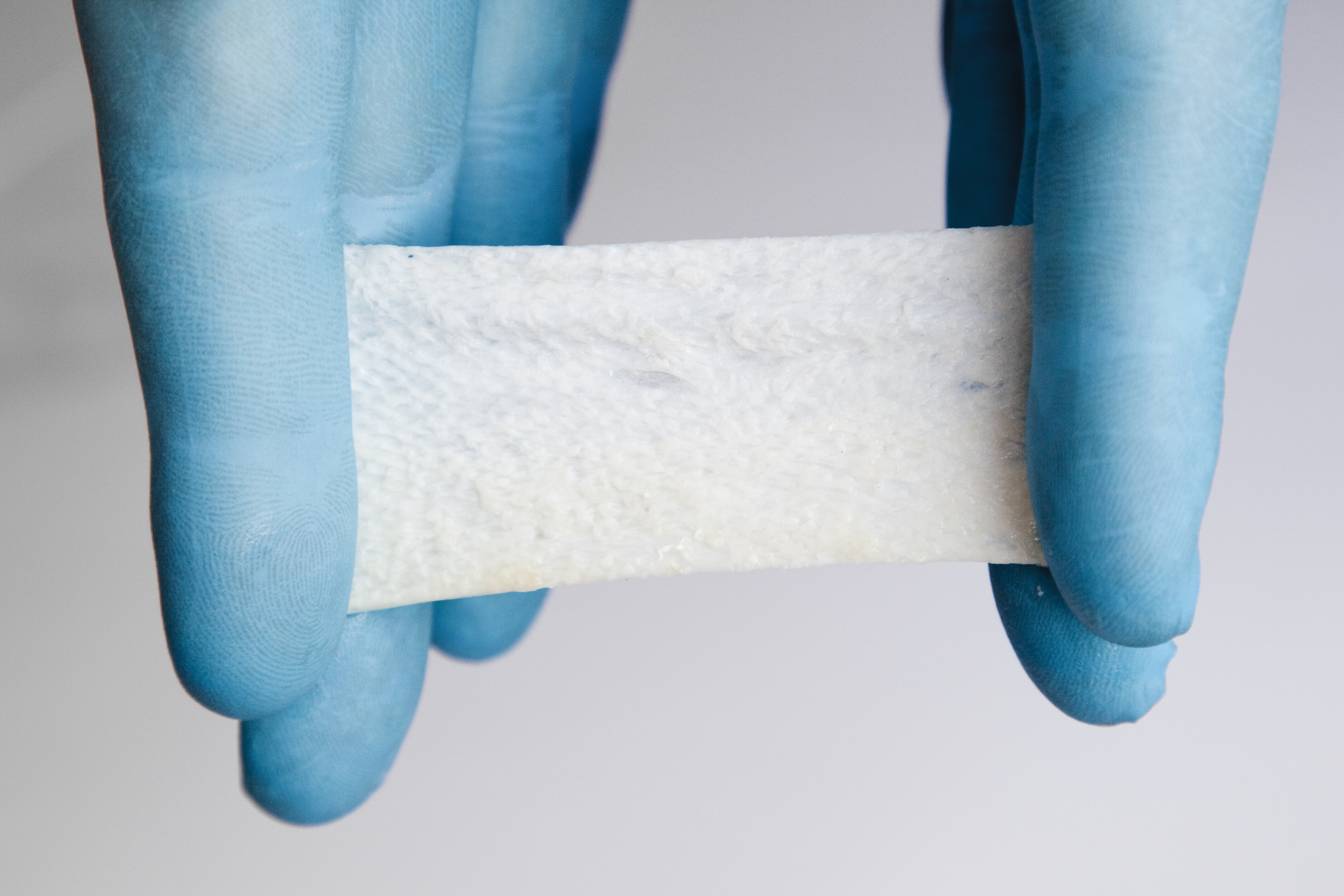Military Burn
Omega-3 Fish Skin for Burn Wound Coverage and Advanced Healing



Posted February 11, 2020
Hilmar Kjartansson, M.D., Kerecis Limited

Recent media coverage of volcanic eruptions and wildfires has highlighted our need for cost-effective and readily available severe burn wound coverage. Yet, coverage of the wound is no longer enough. In situations where access to care is delayed, or limited due to exhausted or insufficient resources, coverage products need also demonstrate anti-infective and/or wound healing properties. The gold standard for severe burn wound management of deep-partial and full-thickness burns (deep second- and third-degree burns, respectively) includes early excision or debridement of dead tissue (often surgically), and autografting (use of healthy, unburned skin from another area of the burn patient’s body to cover the burned wound) to initiate wound healing and closure. However, such complex burn care management requires skilled personnel, often trained burn surgeons, and advanced medical products, both of which are usually only available at hospitals with specialized burn centers that are situated in highly populated cities of developed countries. This limitation not only impacts the care for combat burn casualties in the theater of deployment where medical evacuation is delayed and access to resources is limited, but also for the burn patient in areas where the nearest burn center is several hours away by ground transit or a few hours away by air evacuation. A novel capability that can be kept on the shelf without refrigeration in a rural medical clinic or in a first responder’s bag for the Warfighter would be ideal when resources are limited.
Kerecis Limited, is owned by Icelandic, American and French shareholders and originally incorporated in Iceland. The company has U.S. Food and Drug Administration (FDA) approval for its fish skin technology, Omega3 Wound, to treat chronic wounds, and 510(k) cleared fish skin products to treat trauma wounds, including second-degree burns. The Military Burn Research Program (MBRP) awarded a Fiscal Year 2015 Burn Injuries Research Award to Kerecis Limited and Principal Investigator Dr. Hilmar Kjartansson to advance the Kerecis® fish skin technology (Figure 1) as an alternative to human cadaver skin (current standard of care) to provide temporary burn wound coverage in the treatment of deep-thickness and full-thickness burns. The fish skin alternative will also be tested in a small pilot clinical study to assess its safety and efficacy in third-degree burn patients.

Figure 1: Kerecis® Omega3 - Acellular fish skin graft
Development of the Kerecis® fish skin product for temporary wound coverage could help address the shortage of available donated human cadaver skins. Since the Kerecis® fish skin product is derived from Atlantic cod, with no known existing disease transmission risk to humans, the fish skin can undergo a gentler process that allows for preserving its natural structure and contents. The resulting processed fish skin product is more similar to human skin than processed mammalian matrices. The Kerecis® fish skin also has simple storage requirements and minimal preparations before application; the product has a 3-year shelf life at room temperature and can be prepared by hydrating the material for 30 to 60 seconds in saline solution before application. The MBRP is also interested in nonsurgical debridement solutions that could complement the fish skin product as part of a burn wound management option for the care of combat burn casualties or civilian burn patients when care is delayed or when resources are limited.
Under the MBRP award, the safety and efficacy of the Kerecis® fish skin graft were demonstrated to provide temporary burn wound coverage in a relevant pig model with full-thickness burns (third-degree burns) following debridement. The data also shows that the fish skin graft is autograft sparing, meaning the fish skin as a temporary wound coverage allows minimal use of costly autografts. One important observation noted in the healed wounds of meshed autografts used in combination with the fish skin product was the appearance of smooth uniform skin and avoidance of the quilt-like bumpy skin surface that is common with the use of meshed autografts. Additionally, the fish skin product showed comparable outcomes to those treated with cadaver skin, leading to a granulated wound bed that is receptive to autografting, and also performed better than Allevyn, a foam dressing. In another porcine animal model with deep-partial burns (deep second-degree burns), the fish skin product again provided better wound healing than fetal bovine dermis, a substitute for allograft to treat large burn injuries, producing a granulated wound bed much faster, by Day 14 compared to Day 21. Other observations noted include faster re-epithelialization, improved wound healing with or without autografts, and improved contraction.
The completed preclinical studies and resultant data supported a Kerecis FDA Investigational New Drug application to conduct a pilot clinical study to evaluate and establish the clinical relevance of the Kerecis®-modified fish skin product for third-degree burns. The clinical study will enroll burn patients at least 21 years of age with acute full-thickness burn wounds that require meshed autografts. The primary endpoints for the study include time to wound closure, scar formation, and functional and cosmetic outcomes based on the Vancouver Scar Scale. If clinical outcomes are favorable, the data could be used to support a larger clinical trial to provide clinical evidence to support an FDA Pre-Market Approval for the Kerecis® Omega-3 fish skin product for use as a full-thickness burn wound care medical device.
Link:
Public and Technical Abstracts: Prolonged Field Care and Forward Deployment of Cadaver Skin-Like Wound Covers in the Combat Theater
Last updated Friday, December 13, 2024














